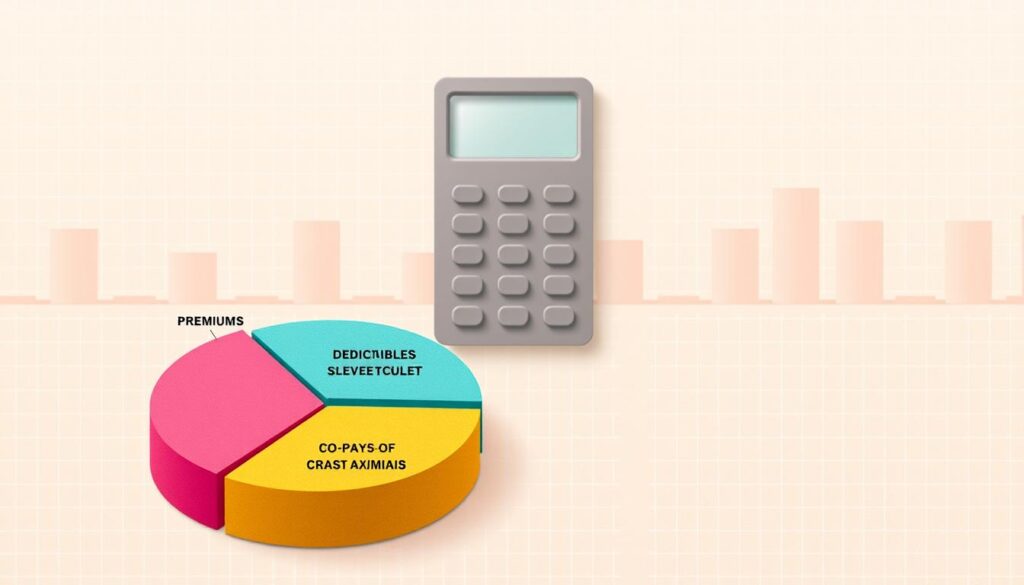How to Choose the Right Health Insurance Plan
Choosing the right coverage can feel overwhelming, but a few clear steps make it manageable.
Start by listing your expected medical needs for the next year: visits, prescriptions, and any planned procedures. That view helps you match a plan to your actual care and avoid surprise costs.
Compare your options — employer offerings, Marketplace choices, private insurers, and public programs like Medicaid or CHIP if eligible. Check premiums, deductibles, co-pays, coinsurance, and out-of-pocket maximums so you see total costs, not just the monthly amount.
Confirm that preferred providers and pharmacies are in-network to keep bills low. If you are pregnant or have young children, verify preventive care, prenatal services, and well-child visits are covered. Use free Navigators for help with comparing choices and enrollment deadlines.
Key Takeaways
- List expected care for the year to match a plan to your needs.
- Compare employer, Marketplace, private, and public options side by side.
- Understand premium, deductible, co-pay, coinsurance, and out-of-pocket max.
- Confirm providers and pharmacies are in-network to avoid surprises.
- Check pregnancy and child coverage; ask about doula benefits if relevant.
- Use Navigators for free guidance on choices and enrollment timing.
Start Here: Understand Your Options and Where to Shop
Begin by deciding where to shop: through your employer, the insurance marketplace, or a private insurer. That choice shapes costs, enrollment windows, and the forms you’ll need.
Match your situation to the best shopping channel
If your employer offers coverage, ask HR for a benefits summary and the employee premium share. Employer contributions often lower your monthly premium, so compare that to Marketplace options.
Know enrollment windows and Marketplace basics
The health insurance marketplace at HealthCare.gov lets you enter your ZIP code to see state exchanges. Open enrollment runs yearly; special enrollment is limited to qualifying life events.
Check financial help and get expert support
Use the Marketplace screening to see if you qualify for premium tax credits or Medicaid/CHIP. In expansion states, adults up to about 138% of the federal poverty level may qualify.
| Where to Shop | Key Advantage | What to Verify |
|---|---|---|
| Employer | Lower employee share of premiums | Payroll pre-tax, network providers, summary of benefits |
| Marketplace | Subsidies may reduce cost | Eligibility for credits, enrollment deadlines, provider network |
| Private insurer | More plan choices in some areas | Coverage details, formularies, in-network providers |
- Estimate monthly premium and expected annual cost before you commit.
- If unsure, a Navigator or HR benefits admin may help with comparisons and enrollment steps.
- Always verify that your preferred providers and pharmacy are in-network to protect access to care.
Compare Plan Types and How They Affect Care Access
Compare common product types so you can see how network rules change access and costs.

HMO, PPO, EPO, POS: network rules and flexibility
HMOs usually require in-network care and referrals from a primary provider. That keeps costs down but limits choice.
PPOs let you see doctor specialists without referrals and allow out-of-network visits at higher rates. In rural areas a PPO may improve access to more providers.
EPOs demand in-network use like HMOs but often skip referrals. Coverage outside the network is typically only for emergencies.
POS blends features: you coordinate through a primary provider and can go out-of-network at higher cost when needed.
Referrals and care coordination
“Using a primary provider for referrals can streamline tests and reduce repeated services.”
Care coordination centralizes records and can speed diagnosis. Check how each product handles specialist access and telehealth before you enroll.
| Type | Network | Referral | Best for |
|---|---|---|---|
| HMO | Strict in-network | Required | Lower costs, local care |
| PPO | Broad, out-of-network allowed | Usually not required | Flexibility, limited local networks |
| EPO | In-network only | Usually not required | Balance of cost and access |
| POS | Mixed network | Required | Care coordination with out-of-network option |
High-deductible options and HSAs
High-deductible products pair lower premiums with bigger deductibles. If HSA-eligible, you can save pre-tax dollars for qualified expenses.
Check whether your employer contributes to an HSA. That can cut pocket expenses and help you meet the deductible faster.
Check Networks and Covered Services Before You Enroll
Check the network map early so you know where you can get care without surprise bills.
Plan networks and providers: in-network vs. out-of-network
In-network providers have negotiated rates that lower member costs. Out-of-network visits often cost more or may not be covered except in an emergency.
- Start with the plan network map and confirm your primary care doctor, key specialists, hospital, and urgent care are in-network.
- Where networks use tiers, a preferred provider tier can mean lower co-pays and coinsurance than other tiers.
- Make sure your pharmacy is in-network and your drugs are on the formulary to avoid higher pharmacy costs.
What plans cover under the ACA
ACA-compliant plans cover preventive services, prenatal care, labor and delivery, and well-baby/well-child services. Some products may also include doula or behavioral services—verify benefits before you enroll.
Keep your doctors and pharmacies: verify in the directory
Use the provider directory and then call offices to confirm they accept the exact insurance plans and network product name.
“Always keep screenshots or notes of directory checks and confirmation calls in case you need to appeal a claim.”
Costs Beyond the Premium: Build Your Total Cost Picture
To see true cost, add a full year of monthly premiums to likely out-of-pocket expenses for visits, prescriptions, labs, imaging, and any specialist care. That total reveals how much your family will actually pay, not just the monthly bill.

Key terms you must know
Premium: your monthly payment. Deductible: the amount you pay each year before most cost-sharing starts.
Copay: a fixed fee per visit or service. Coinsurance: a percentage you pay after the deductible. Out-of-pocket maximum: the annual cap after which the insurer covers covered care at 100%.
Higher premiums vs. higher out-of-pocket
If you expect frequent visits, brand-name drugs, maternity, or a scheduled procedure, choosing higher premiums with lower cost-sharing can protect your pocket at year end.
For generally healthy households, lower premiums can save money—but model a few “what if” scenarios so a surprise event doesn’t blow your budget.
- Compare summaries: use employer or Marketplace benefit snapshots to check typical insurance costs by service.
- Check networks: confirm providers are in-network to avoid larger out-of-pocket bills.
- Consider HSAs: employer HSA contributions and pre-tax savings can offset deductible and coinsurance exposure.
Conclusion
Wrap up with a short checklist that matches your priorities to the final options. List budget limits, access to specific providers, prescriptions, and the likely care you expect over the year.
Visit your employer benefits portal or the insurance marketplace, pick a product type (HMO, PPO, EPO, POS), and weigh higher monthly cost versus lower visit charges or vice versa. Confirm your doctors, hospital, and pharmacy are in the network and that recurring meds appear on the formulary.
Call a Navigator at 800-318-2596 or your HR admin if questions remain. Keep benefit summaries, ID cards, and provider confirmations handy, note your effective date, and enroll before your window closes.
,
FAQ
How do I choose the best health insurance option for my situation?
Start by listing your care needs: regular prescriptions, specialist visits, planned procedures, and family size. Compare channels—employer coverage, the Health Insurance Marketplace, and private insurers—to see which offers networks, benefits, and costs that match those needs. Check premiums, deductibles, copays, coinsurance, and out-of-pocket maximums. Verify provider directories to make sure your doctors and pharmacies are in-network. If you’re unsure, use a licensed broker or a Marketplace Navigator for free, unbiased guidance.
Where should I shop for coverage: employer, Marketplace, or a private carrier?
Employer-sponsored group offerings often provide lower premiums and predictable payroll deductions. The Marketplace may offer premium tax credits or cost-sharing reductions if your income qualifies. Private insurers can offer more plan choices or specialized networks but usually lack subsidies. Match the shopping channel to your eligibility, budget, and whether you need flexible provider access or specific benefits like maternity or mental health services.
When can I enroll or change plans?
Open enrollment typically occurs once per year; dates vary by employer and the federal Marketplace. You may also qualify for a Special Enrollment Period after major life events like marriage, birth, loss of other coverage, or moving. Check your employer HR or Healthcare.gov for exact windows and required documentation to avoid gaps in coverage.
How do I know if I qualify for financial help like premium tax credits, Medicaid, or CHIP?
Eligibility depends mainly on household income, household size, and state rules. The federal Marketplace estimates subsidy eligibility when you apply. Medicaid and CHIP guidelines vary by state; many states allow online screening and enrollment through state portals. If you qualify, subsidies can significantly lower monthly premiums and out-of-pocket costs.
What’s the difference between HMO, PPO, EPO, and POS plans?
HMO plans require you to use in-network providers and often need a primary care physician (PCP) referral for specialists, keeping costs lower. PPOs allow out-of-network care at higher cost and usually don’t require referrals. EPOs combine in-network-only coverage without referrals. POS plans blend HMO and PPO features, letting you go out-of-network but often requiring referrals. Choose based on how much provider flexibility you want versus lower cost.
Do I need referrals and care coordination?
Referrals matter in HMOs and some POS plans—your PCP coordinates care and approves specialist visits. Care coordination helps manage complex conditions, reduces duplicative tests, and keeps costs down. If you see multiple specialists or have chronic illness, pick a plan with strong coordination, case management, or integrated provider networks.
What are high-deductible plans and Health Savings Accounts (HSAs)?
High-deductible health plans (HDHPs) pair lower premiums with higher deductibles. They often qualify you for an HSA, a tax-advantaged account to save pre-tax dollars for qualified medical expenses. HSAs offer tax-free growth and withdrawals for care, but HDHPs shift more upfront costs to you, so they work best if you can cover the deductible or want lower monthly premiums.
How can I confirm which providers and services are covered before enrolling?
Review the insurer’s provider directory and call your doctor’s office to confirm participation and any referral rules. Check the Summary of Benefits and Coverage (SBC) for covered services, limits, and prior authorization requirements. For prescriptions, use the plan’s drug formulary to see tiers, copays, and whether prior authorization or step therapy applies.
What mandatory services are covered under the Affordable Care Act?
Marketplace-compliant plans must cover essential health benefits, including preventive services, maternity and newborn care, mental health and substance use disorder services, prescription drugs, pediatric services, and chronic disease management. Coverage specifics and cost-sharing rules can vary by plan, so review the SBC for exact details.
How do I estimate my total yearly health care costs beyond the premium?
Add expected premiums to anticipated out-of-pocket expenses: deductible, copays, coinsurance, and any services not fully covered. Factor in recurring prescriptions, specialist visits, and potential procedures. Compare scenarios—lower premium with higher deductible versus higher premium with lower out-of-pocket—to see which fits your budget and risk tolerance.
How do premium, deductible, copay, coinsurance, and out-of-pocket maximum affect my costs?
Premiums are monthly payments to maintain coverage. The deductible is the amount you pay before many benefits kick in. Copays are fixed fees for visits or drugs, while coinsurance is a percentage you pay after meeting the deductible. The out-of-pocket maximum caps your annual spending for covered services; after that, the insurer pays 100% of covered costs. Understanding each term helps you predict cash flow and compare plans more accurately.
Should I choose higher premiums or higher out-of-pocket costs?
If you expect frequent care, chronic condition management, or family coverage, a plan with higher premiums but lower out-of-pocket costs can save money overall. If you are generally healthy, single, and can afford an unexpected bill, a lower-premium plan with higher deductible may be cost-effective. Run cost scenarios based on last year’s actual medical use to decide.
Can I keep my current doctors and pharmacies?
You can keep them if they participate in the plan’s network. Always verify participation in the insurer’s current provider directory and confirm directly with the provider’s office. For prescriptions, check the formulary and pharmacy network to avoid surprise out-of-network costs.
Where can I get free expert help with enrollment and plan choice?
Use Marketplace Navigators, certified application counselors, or community health centers for unbiased help at no cost. If you have employer coverage, your HR or benefits administrator can explain plan options, contribution structures, and in-network providers. Licensed brokers can also help and are often compensated by insurers, so ask about fees and affiliations.
